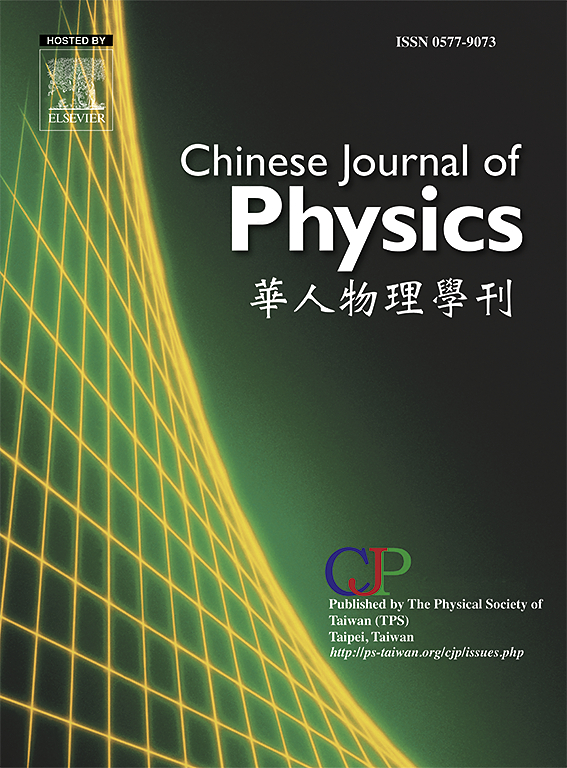Exploring heat generation and magnetic effects on unsteady ternary nanofluid flow over a dynamic wedge in porous media
IF 4.6
2区 物理与天体物理
Q1 PHYSICS, MULTIDISCIPLINARY
引用次数: 0
Abstract
In the die-slit process, unsteady MHD ternary nanofluid flow over a moving wedge helps enhance material quality and production efficiency. This study specifically examines unsteady MHD flow dynamics involving heat generation/absorption, viscous dissipation, and Ohmic heating effects, using a ternary nanofluid composed of -CuO-Cu/water over a moving wedge. Mathematical modeling and numerical computation analyze how heat generation/absorption impacts flow characteristics. Critical values for single and dual solutions are obtained using BVP4C in MATLAB, with dual solutions for leftward wedge motion and a single solution for rightward motion. Graphical results illustrate the influence of key parameters — involving the moving parameter, wedge parameter, Eckert number, magnetic parameter, heat source/sink parameter, and Darcy number — on flow dynamics and thermal transfer. The main results show that convective thermal transfer rises with larger values of the suction/injection parameter, unsteadiness parameter, Eckert number, and magnetic parameter, while it decreases during the rinsing process for the wedge angle parameter, Darcy number, and heat source/sink parameter. When the moving wedge parameter is −4, the heat transfer of THNF is 0.44% higher than NHF and 1.30% higher than NF. This study proposes a novel formulation for the time-varying permeability of a porous medium influenced by a moving wedge, offering valuable insights to enhance material properties, minimize waste, and improve precision in the extrusion process.

求助全文
约1分钟内获得全文
求助全文
来源期刊

Chinese Journal of Physics
物理-物理:综合
CiteScore
8.50
自引率
10.00%
发文量
361
审稿时长
44 days
期刊介绍:
The Chinese Journal of Physics publishes important advances in various branches in physics, including statistical and biophysical physics, condensed matter physics, atomic/molecular physics, optics, particle physics and nuclear physics.
The editors welcome manuscripts on:
-General Physics: Statistical and Quantum Mechanics, etc.-
Gravitation and Astrophysics-
Elementary Particles and Fields-
Nuclear Physics-
Atomic, Molecular, and Optical Physics-
Quantum Information and Quantum Computation-
Fluid Dynamics, Nonlinear Dynamics, Chaos, and Complex Networks-
Plasma and Beam Physics-
Condensed Matter: Structure, etc.-
Condensed Matter: Electronic Properties, etc.-
Polymer, Soft Matter, Biological, and Interdisciplinary Physics.
CJP publishes regular research papers, feature articles and review papers.
 求助内容:
求助内容: 应助结果提醒方式:
应助结果提醒方式:


